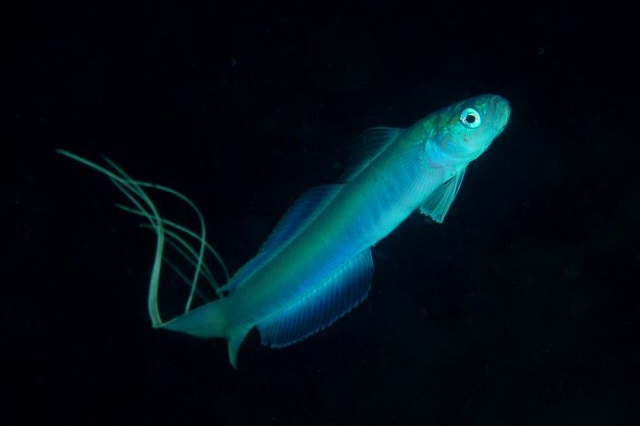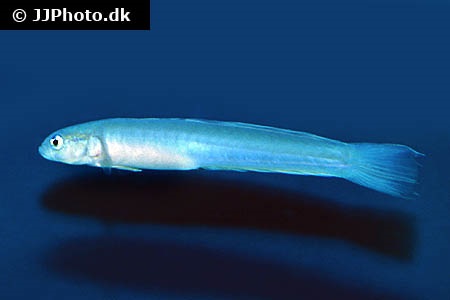Ptereleotris hanae


| Latin name | Ptereleotris hanae - (Jordan & Snyder, 1901) |
|---|---|
| Local name | Blue hana goby |
| Family | Microdesmidae - Ptereleotris |
| Origin | East Indian Ocean, Australia, Japan, Indonesia, East Pacific, Central/West Pacific |
| Max length | 12 cm (4.7") |
| Minimum volume |
100 l (26 gal) |
|---|---|
| Hardiness |
Average |
| Suitable for aquarium |
Suitable with care |
| Reef safe |
Always reef safe |
| Aggressiveness | Docile |
| Recommended |
Small crustaceans (Krill, mysis, artemia...) Zooplankton (Cyclops, pods...) |
|---|
This species is known to jump out of open aquaria.
This fish requires holes for hiding.
It is incapable of digging its own holes, so the reef keeper must provide sufficient hiding places.
3/4" PVC is ideal for these holes which should lead to a bigger chamber.
It is best if such a chamber has multiple exits.
These fish should be kept with Pistol shrimp of the Alpheus genus.
These fish may well hide themselves for a while, whilst getting acclimatized.
Do not disturb the fish while acclimating because it will prolong the process.
This fish requires feeding several times a day, especially when newly added.
When the fish can find its natural food in the aquarium it requires less frequent feeding.
This species thrives best in a pair. (Male and female)
This species can function in large numbers down to just one.
This species is very shy and docile, so one should be careful when keeping it with more aggressive fish.
Dartfish (Microdesmidae) are recognized by their unique torpedo like shape. All Dartfish need hiding places where they can withdraw to when feeling threatened. They do not normally naturally dig their own holes, but use ones made by other creatures.
They are generally a popular aquarium fish, relatively easy to keep, so for a small tank with peaceful fish the Dartfish is the obvious choice.
They can easily feel threatened by larger more aggressive fish with the result that they cannot feed enough and die by lack of food. One has therefore a greater chance of success when they are kept with smaller, peaceful, fish.
After first introducing a Dartfish, it is advizable to dim the light, so it can get used to the tank in peace.
| Aquarium trade | Yes |
|---|---|
| Distribution | Pacific Ocean: Philippines to the Line Islands, north to southern Japan, south to northwestern Australia and New South Wales. |
| English common names |
Thread-tail dart-goby Filament dartfish Blue hana goby |
Henry C. Schultz. 2003. Worms Not Found in the Sandbed: The Genus Ptereleotris - Reefkeeping Magazine - (English)
Daniel Pomfret. 2008. Let’s Play Darts! Marine Dartfish - Tropical Fish Hobbyist - (English)
Bob Fenner. Firefishes, Dartfishes, Wormfishes, Family Microdesmidae, Subfamily Ptereleotrinae - Wet Web Media - (English)

